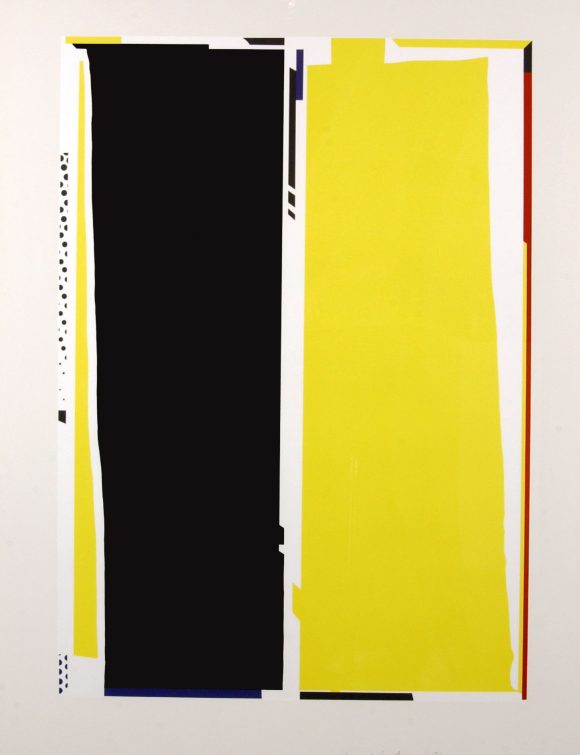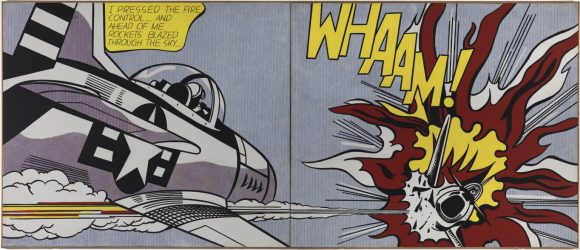Roy Lichtenstein A Look Through Mirror #5 at a Central Figure of Pop Art
April 27, 2017
Roy Lichtenstein’s work Mirror #5 is a part of the Escalette Permanent Collection here at Chapman University. This piece can be found on the 3rd floor of Beckman Hall, located on main campus. Upon first glance, this work does not appear to be a typical Lichtenstein print, as it lacks his typical pop art characters and drawings; however, this lithograph showcases the influence of abstract styles on Lichtenstein’s later works during the 70s and 80s.
Roy Lichtenstein is an American artist most well-known for his pop art. Born in New York City on October 27, 1923, he became interested in art during high school, when he began taking watercolor classes at Parsons School of Design in addition to other art classes at the New York Art Students League. After graduation, Lichtenstein studied at Ohio State University where he started to pursue a degree in fine arts before being drafted to serve in World War II for three years.
After his service, Lichtenstein returned to Ohio to complete his undergraduate and master’s degree in fine arts. When he finished his studies, Lichtenstein taught for a brief time at Ohio State before moving to Cleveland to work as a window-display designer, and commercial-art instructor.
At the start of Lichtenstein’s career in the late 1940s, he exhibited his art in galleries from Cleveland to New York City. His early work contained elements from a variety of 19th century modernist art movements including Cubism and Expressionism; however, towards the late 1960s Lichtenstein began experimenting with different methods and subjects in the Pop art style. In reaction against Abstract Expressionism, his art began to focus on American popular culture and mimic comic book art. This new Pop Art style placed mass media on the same level as fine art, blurring the previously defined line between the two.
One of Lichtenstein’s most famous work from this period, Whaam! , drew inspiration from a comic book panel in DC Comic’s All-American Men of War. Alongside artists like Andy Warhol and Claes Oldenburg, Lichtenstein quickly became known as a leader in the Pop Art movement by the mid-1960s. This movement challenged the traditions of typical fine art by featuring images from popular culture like advertising, comic books, and every-day products, often ironically.
In his later career, Lichtenstein began experimenting with new types of media, including mirrors, and bronze. He also expanded his art practice by producing sculptures and films, as well as mixing Cubism, Surrealism, and Abstract Expressionism with his iconic comic-like drawing style. Mirror #5 exemplifies this mixing of abstraction and pop art style.
Lichtenstein continued his art career until his death in 1997, and his influence has continued into the 21st century. His work has been featured in films, including Night at the Museum, as well as music, such as U2’s PopMart Tour. Lichtenstein’s works can be seen in museums around the world, from LACMA to the National Portrait Gallery in London.
Stop by Beckman Hall to see Mirror #5 and the works of other Pop Art artists in the Escalette Collection!
To schedule a tour with the Art Collections, please contact artcollections@chapman.edu.
All text and images under copyright. Please contact artcollections@chapman.edu for permission to use. Information subject to change upon further research.




